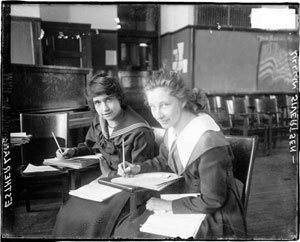The Lost Museum Classroom

The Classroom provides a variety of resources and strategies to help teachers and students make sense of the Lost Museum’s historical materials. Using the American Museum’s many attractions, the site attempts to convey the social, cultural, and political history of antebellum and Civil War America, emphasizing issues of race, gender, reform, immigration, sectionalism, and popular culture. Toward that end, background essays (between 750 and 1000 words in length) offer context for the site’s key historical themes. Teaching The Lost Museum is an overview essay that enumerates the specific exhibits, documents, and lessons that pertain to topics commonly taught in U.S. history courses. This essay can help instructors familiarize themselves with the site and create student assignments related to their teaching needs. Numerous activities offer a structured way to use the site within a class period or two. Reference resources include a timeline of important events in the life of the nation and the American Museum; a bibliography of historical scholarship on Barnum, the American Museum, and the museum’s attractions; and a list of links to related Web sites.